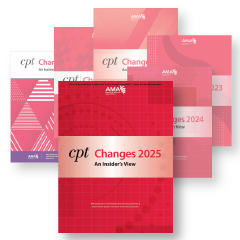 Preventive Medical ServicesBy NAMAS - Shannon O. DeConda, CPC, CPC-I, CEMC, CMSCS, CPMA November 18, 2016 The guidelines for PMS (Preventive Medicine Services), like those of regular E&M services are gray and leave many puzzling questions to the auditor regarding what is exactly is REQUIRED according to guidelines. In this tip, I will try to address the areas of documentation and provide a relatively concise statement of work consideration for each component. However, it must be stated that every organization providing PMS services should have a definitive policy for the providers to abide by through their documentation and encounter with the patient as well as the auditor to refer to when auditing the encounter.
The guidelines indicate that the "comprehensive" indicated in the descriptor of the code does not indicate that "comprehensive" is mandatory... however, before you think "whew!"... let's consider the components and what truly is "appropriate," remembering that the guidelines according to AMA CPT state we must require an "...age and gender appropriate history, examination, counseling/anticipatory guidance/risk factor education..."
So, let's start at the top with the history. Through the history of any patient encounter we would hope to be driving the severity of the patient's condition according to the patient through the interview process of the HPI, ROS, and PFSH. Only, these patients don't have a problem, so how do we address the history?
Moving to the exam of the PMS visit, remember the guidance we have.... Age/gender appropriate exam...I would like to suggest you think of the exam this way.... How little is enough? What I mean is- a preventive wellness exam requires an age/gender appropriate exam-how much does the doctor or the NPP think is enough based on that patients history and well-being? Most commonly, we would hope to have a complete examination, but again with guidelines so gray it would be very difficult to hold a provider to such a requirement. I do tend to ask providers who do less than a complete exam, if a carrier, an attorney, or worse yet a judge asked you why you did less than a comprehensive exam on that patient- what would be the answer? Oftentimes, there is no valid answer and documentation of the examination changes moving forward.
Last, we turn to the plan of care. The plan of care should be relevant to preventive wellness needs of the patient, providing an assessment of the patient's overall wellness picture and ordering or indicating what additionally is needed from a preventive plan for that patient.
If you are a provider and your services are being reviewed by an auditor (internal, external, or carrier), or if you are an auditor being audited through a QA process, remember you have the right to substantiate your findings based on your interpretation of the guidelines when there is absence of further policy, regulation, or guideline. Be sure to review commercial carrier guidelines to identify any specifics they may deem as required for reimbursement, but the moral of the story really is this: Preventive Medicine Services seem to have the most ambiguity of any of our E&M services.
This Week's Audit Tip Written By: Shannon O. DeConda, CPC, CPC-I, CEMC, CMSCS, CPMA
Shannon is a Partner in our parent organization, DocotorsManagement, LLC and is also the President/Founder of NAMAS
share
More Items in November 2016
To view more items select a month from our "Items by Month" list. |
2023 view 2022 view 2021 view 2020 view 2019 view 2018 view 2017 view 2016 view 2015 view 2014 view 2013 view 2012 view 2011 view 2010 view 2009 view 2008 view |
Thank you for choosing Find-A-Code, please Sign In to remove ads.


 Quick, Current, Complete - www.findacode.com
Quick, Current, Complete - www.findacode.com